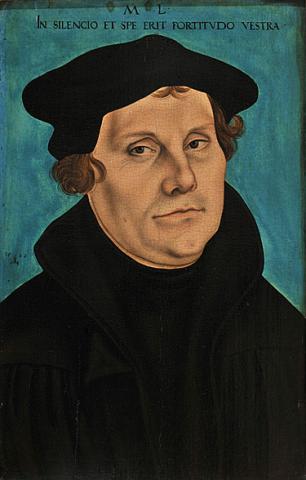
Few figures in history are as influential or divisive as Martin Luther. How did one monk at the edge of the German Empire divide the Church and completely alter the course of Western history?
The printing and distribution of Luther’s Ninety-Five Theses against the sale of indulgences initiated a movement that would not have been possible before the invention of movable type. The Reformation engaged authors, artists, politicians, priests, and printers throughout Europe in a battle over religious doctrine—a subject previously relegated to a select few. Luther and his colleagues expertly employed the still relatively new technology of the printing press to communicate to the masses, and master artists elaborated their texts with woodcut imagery. Artists also created independent works of art to depict and spread the reformer’s message. Authors and artists on both sides of the Reformation produced an avalanche of material for mass consumption. The Reformation was a fight over religious belief that was won by means of successful communication through word and image.
This presentation provides an overview of the exhibition Word and Image: Martin Luther's Reformation, on view October 7, 2016 through January 22, 2017, highlighting a few pieces and the overall themes.
Word and Image: Martin Luther's Reformation is made possible with the support of the Foreign Office of the Federal Republic of Germany and under the patronage of Federal Foreign Minister Dr. Frank-Walter Steinmeier within the framework of the Luther Decade in cooperation with the Luther Memorials Foundation of Saxony-Anhalt, the Deutsches Historisches Museum, Berlin, and the Foundation Schloss Friedenstein Gotha, under the leadership of the State Museum of Prehistory, Halle, and in coordination with the Morgan Library & Museum, New York.
It is also made possible with generous support from the Johansson Family Foundation and Kurt F. Viermetz, Munich, and assistance from the Arnhold Foundation.

Lucas Cranach the Elder, Martin Luther, 1529. Oil on panel. 41.9 x 28.5 cm. Gotha, Stiftung Schloss Friedenstein.
